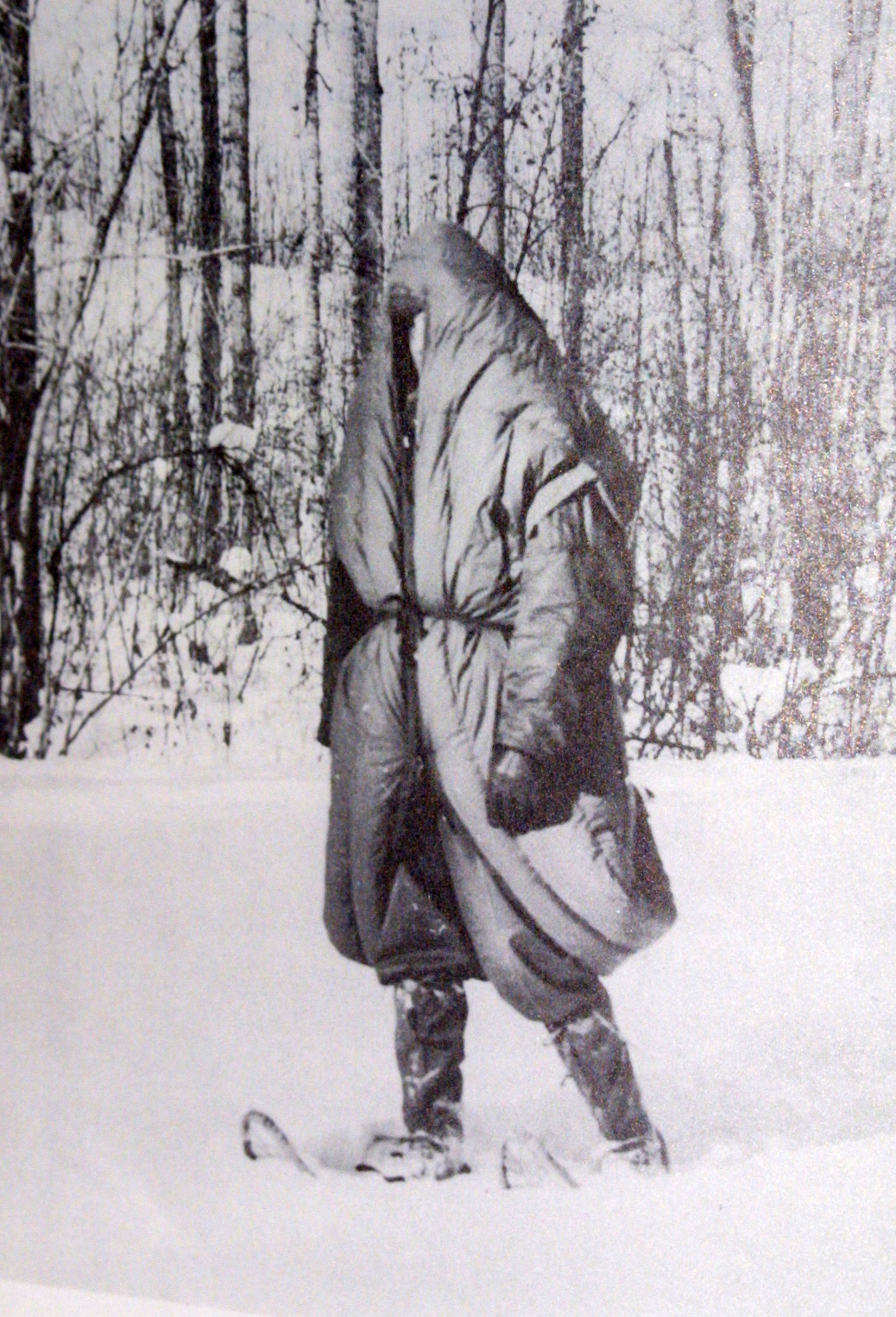
Lab developed Arctic innovations and oddities
“Cleaning and Sterilization of Bunny Boots.”
“Comparative Sweat Rates of Eskimos and Caucasians Under Controlled Conditions.”
These are some of the studies completed by scientists who worked for the Arctic Aeromedical Laboratory from the late 1940s to the 1960s. Developed during the Cold War to “solve the severe environmental problems of men living and working in the Arctic,” the lab cranked out dozens of quirky and sometimes controversial publications in its two decades of existence.
Based at Ladd Air Force Base in Fairbanks, which later became Fort Wainwright, the Arctic Aeromedical Laboratory was a group of about 60 military and civilian researchers charged with finding the best way to wage warfare in the cold. At the time, U.S. political and military leaders feared a nuclear war with the Soviet Union and thought that Alaska was a likely battleground.
Studies from the Air Force lab in Fairbanks included cold-weather gear development (as in Technical Report 59-4, “Walk-Around Sleeping Bag”); the body structure and function of bears, ground squirrels, and other animals that hibernate; and comparison studies of different races of people to see if Eskimos, for example, were better adapted to the cold than non-Native soldiers.
Many people later criticized one of those studies, one on the role of the thyroid gland in acclimation to the cold, because researchers in 1956 and 1957 gave capsules of iodine 131, used to trace thyroid activity, to 102 Alaska Natives from five northern villages and 19 military volunteers. In the 1990s, The National Research Council investigated and found ethical problems with the study but decided that the damage done by the capsules was probably “negligible,” and that scientists “held a genuine belief, justified at the time, that their research was both harmless and important.”
Less publicized was the lab’s “simulated survival trek” from Anaktuvuk Pass to the Arctic Ocean by an Air Force captain and staff sergeant in July 1962. The men were given an aircraft survival kit and instructed to hike and float their way to the Beaufort Sea. Their objective was to “provide field experience in this area and to determine the merits and deficiencies of the F-102 Aircraft Survival Kit.”
One deficiency was the lack of raingear, which forced the men to drape their small life rafts over their heads to stay dry, “with only partial success . . . Both ‘survivors’ were shivering uncontrollably and had to call on considerable will power to make camp,” they wrote. Upon completion of their trip, with the help of an “observer” who traveled next to them in the Colville River on a larger raft, the men recommended that future versions of the survival kit include both lightweight rain gear and salt, which they craved after shooting ground squirrels and netting whitefish.
Shivering volunteers must have been a common site at the Fairbanks lab, where researchers quantified how different areas of the body generate and lose different amounts of heat. In one experiment, scientists found that no matter how thick the insulation covering the body core, a person’s hands and feet will always get cold if uncovered. To combat these weak points, the lab developed heated bunny boots and gloves powered by a seven-pound battery vest that would allow a person to remain somewhat comfortable while being inactive at minus 40 degrees Fahrenheit.
The mental well-being of the northern soldier was also a favorite study topic. In one of the lab’s reports published in 1950, an Air Force major wrote about differences between infantrymen who came to Alaska from either the southern or northern U.S.
“It was found that the men from the South are significantly more depressed than those from the North, although the latter group expresses disposition changes indicative of increased frustration,” he wrote. “Both groups are similar in experiencing increased tension, lack of sociability, insomnia, and feeling of increased aggression."
Since the late 1970s, the University of Alaska Fairbanks’ Geophysical Institute has provided this column free in cooperation with the UAF research community. Ned Rozell is a science writer for the Geophysical Institute. This column first appeared in 2004.





